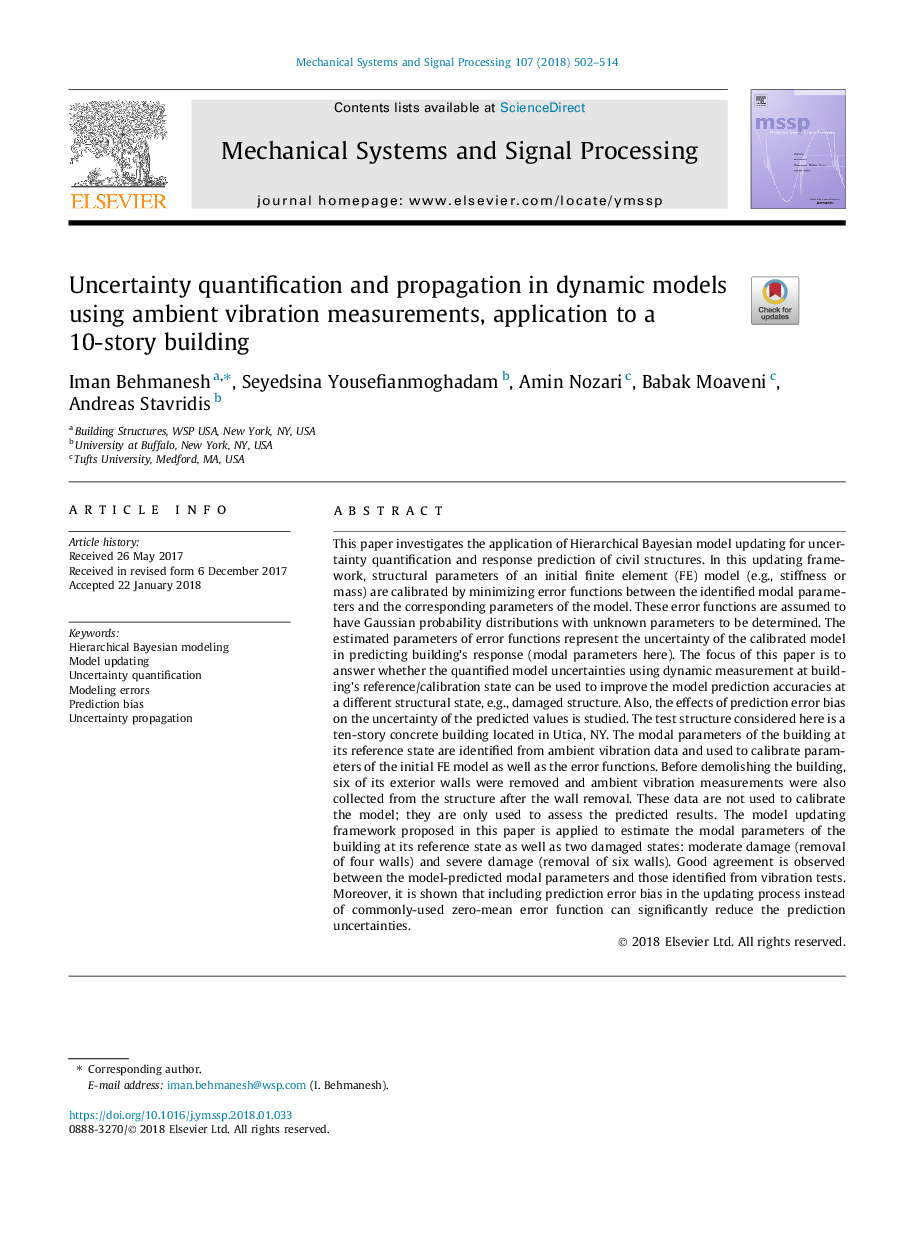| کد مقاله | کد نشریه | سال انتشار | مقاله انگلیسی | نسخه تمام متن |
|---|---|---|---|---|
| 6954281 | 1451828 | 2018 | 13 صفحه PDF | دانلود رایگان |
عنوان انگلیسی مقاله ISI
Uncertainty quantification and propagation in dynamic models using ambient vibration measurements, application to a 10-story building
ترجمه فارسی عنوان
اندازه گیری عدم قطعیت و انتشار در مدل های پویا با استفاده از اندازه گیری ارتعاش محیط، کاربرد در یک ساختمان 10 طبقه
دانلود مقاله + سفارش ترجمه
دانلود مقاله ISI انگلیسی
رایگان برای ایرانیان
کلمات کلیدی
مدل سازی باینری سلسله مراتبی، به روز رسانی مدل، عدم قطعیت اندازه گیری، خطاهای مدل سازی تعصب پیش بینی، عدم قطعیت انتشار،
موضوعات مرتبط
مهندسی و علوم پایه
مهندسی کامپیوتر
پردازش سیگنال
چکیده انگلیسی
This paper investigates the application of Hierarchical Bayesian model updating for uncertainty quantification and response prediction of civil structures. In this updating framework, structural parameters of an initial finite element (FE) model (e.g., stiffness or mass) are calibrated by minimizing error functions between the identified modal parameters and the corresponding parameters of the model. These error functions are assumed to have Gaussian probability distributions with unknown parameters to be determined. The estimated parameters of error functions represent the uncertainty of the calibrated model in predicting building's response (modal parameters here). The focus of this paper is to answer whether the quantified model uncertainties using dynamic measurement at building's reference/calibration state can be used to improve the model prediction accuracies at a different structural state, e.g., damaged structure. Also, the effects of prediction error bias on the uncertainty of the predicted values is studied. The test structure considered here is a ten-story concrete building located in Utica, NY. The modal parameters of the building at its reference state are identified from ambient vibration data and used to calibrate parameters of the initial FE model as well as the error functions. Before demolishing the building, six of its exterior walls were removed and ambient vibration measurements were also collected from the structure after the wall removal. These data are not used to calibrate the model; they are only used to assess the predicted results. The model updating framework proposed in this paper is applied to estimate the modal parameters of the building at its reference state as well as two damaged states: moderate damage (removal of four walls) and severe damage (removal of six walls). Good agreement is observed between the model-predicted modal parameters and those identified from vibration tests. Moreover, it is shown that including prediction error bias in the updating process instead of commonly-used zero-mean error function can significantly reduce the prediction uncertainties.
ناشر
Database: Elsevier - ScienceDirect (ساینس دایرکت)
Journal: Mechanical Systems and Signal Processing - Volume 107, July 2018, Pages 502-514
Journal: Mechanical Systems and Signal Processing - Volume 107, July 2018, Pages 502-514
نویسندگان
Iman Behmanesh, Seyedsina Yousefianmoghadam, Amin Nozari, Babak Moaveni, Andreas Stavridis,
